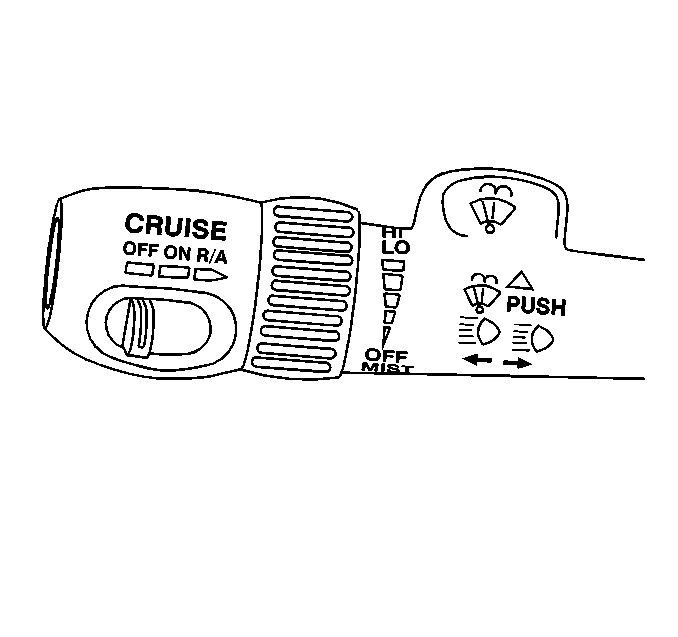For 1990-2009 cars only
| • | The cruise control system maintains a desired vehicle speed under normal driving conditions. |
| • | The cruise control system also has the capability to perform the following functions : |
| - | Coast |
| - | Resume speed |
| - | Accelerate |
| - | Increase speed in 1.6 km/h (1 mph) increments |
| - | Decrease speed in 1.6 km/h (1 mph) increments |
| • | The main components of the cruise control system include the following components: |
| - | The multifunction switch |
| - | The cruise control module |
| - | The vehicle speed sensor (VSS) |
| - | Release switches |
| - | An electrical harness |
| • | The cruise control module contains the following components: |
| - | An electronic controller |
| - | An electric stepper motor |
| • | The electronic controller performs the following functions: |
| - | Monitors vehicle speed |
| - | Operates the electric stepper motor |
| • | The electric stepper motor moves a ribbon in order to maintain the desired cruise speed. The ribbon is connected by a cable to the throttle. |

| • | The cruise control module contains a low speed lockout that prevents system engagement below a minimum speed of approximately 40 km/h (25 mph). |
| The controller operates in response to the control switches located on the multifunction switch. |
| • | Release switches are used in order to disengage the cruise control. |
| When either the brake or the clutch pedal is depressed, the cruise control system is electrically disengaged, and the throttle returns to the idle position. |
| Caution: In order to keep the vehicle under control, and to prevent possible vehicle damage, it is not advisable to use the cruise control on slippery roads. It is recommended not to use the cruise control in conditions such as on winding roads or in traffic of heavy or varying volume. |
| • | In order to keep the vehicle under control and in order to prevent possible vehicle damage, do not use the cruise control on slippery roads. |
